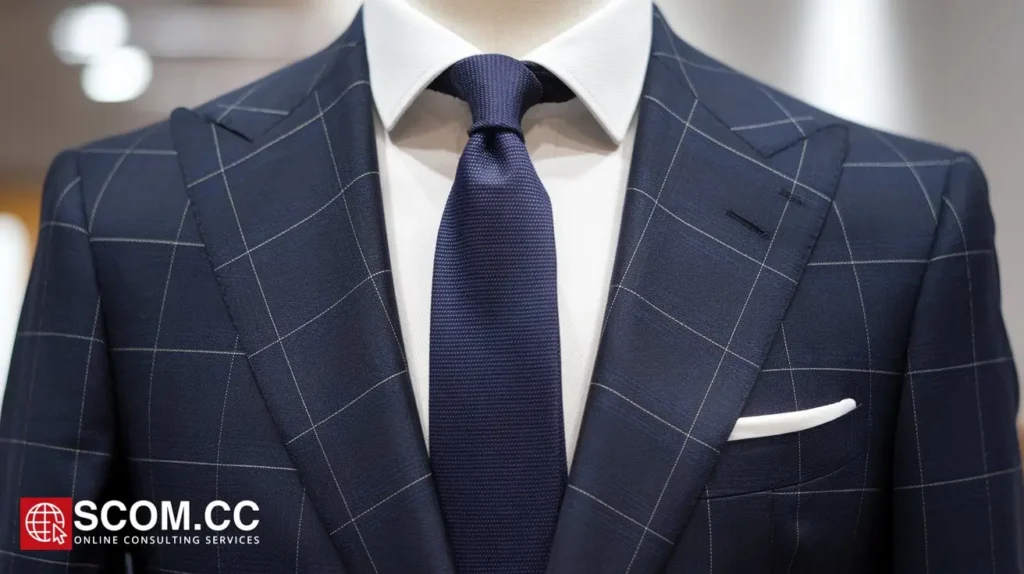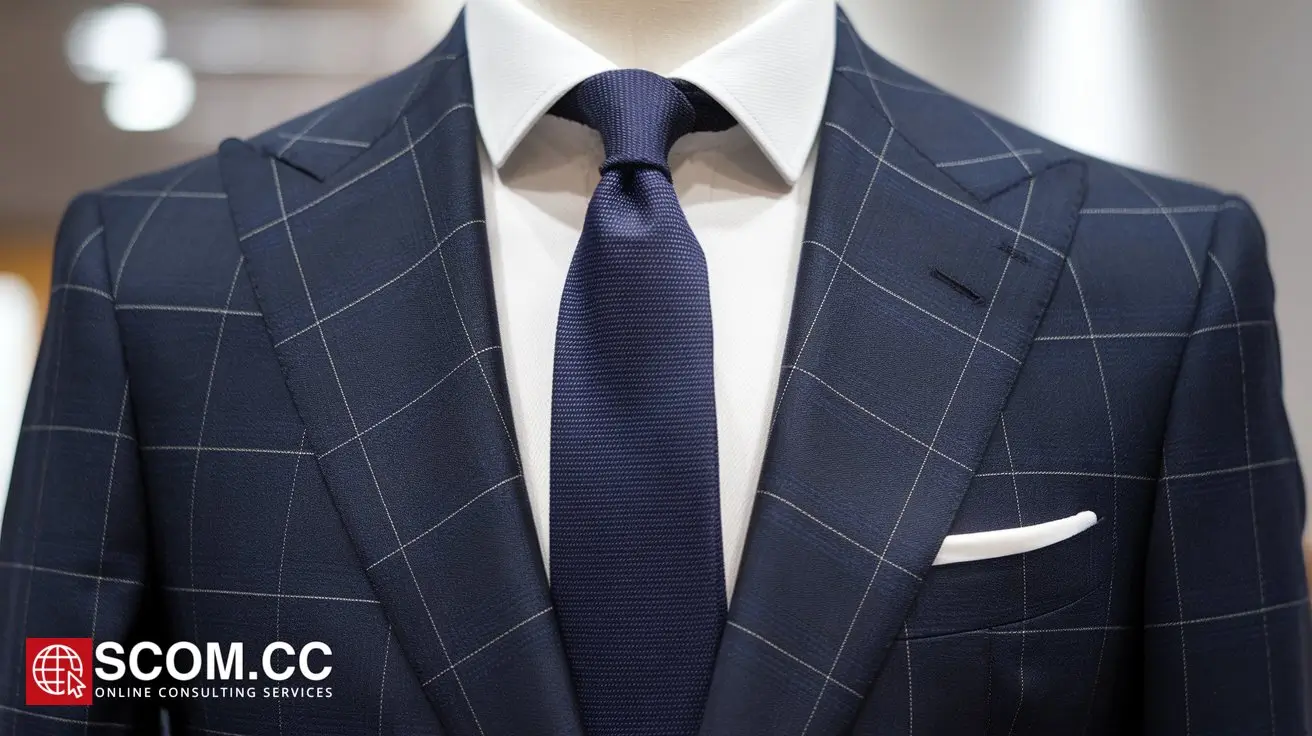5 Key Factors to Consider When Choosing Your Next Suit

- How to Choose Suits: 5 Key Factors to Consider When Choosing Your Next Suit
- Fabric Quality and Type
- Suit Fit and Tailoring
- Suit Style and Design
- Suit Construction and Craftsmanship
- Suit Maintenance and Care
-
FAQ
- 1. What is the best fabric for a suit?
- 2. How should a suit fit?
- 3. What is the difference between single and double-breasted suits?
- 4. What are the different lapel styles and their uses?
- 5. How do I choose the right construction type for my suit?
- 6. How should I maintain my suit?
- 7. What types of buttons are best for a suit?
How to Choose Suits: 5 Key Factors to Consider When Choosing Your Next Suit
Choosing the perfect suit can significantly impact your appearance and confidence. Whether you’re preparing for a job interview, a wedding, or any other special event, understanding the crucial factors in suit selection can make a substantial difference. Here, we delve into the five key factors you need to consider when choosing your next suit to ensure you make the right decision.
Fabric Quality and Type
When selecting a suit, the fabric is one of the most important considerations. The type of fabric not only affects the suit's appearance but also its durability, comfort, and how it fits the occasion.
Wool
Wool is the most common and versatile fabric for suits. It offers a good balance between comfort and durability and is suitable for almost any occasion. Wool suits come in various weights, such as lightweight, medium, and heavyweight, making them adaptable to different climates and seasons. Look for suits made from pure wool or a blend with synthetic fibers for added flexibility and wrinkle resistance.
Cotton
Cotton suits are ideal for warmer climates and casual settings. They are breathable and comfortable but tend to wrinkle more easily than wool. For a more polished look, choose a cotton suit with a structured fit.
Linen
Linen suits are perfect for hot weather due to their lightweight and breathable nature. However, linen wrinkles quickly and may require more frequent maintenance. They offer a relaxed and stylish look but might not be suitable for formal occasions.
Blends
Fabric blends combine wool with other materials such as polyester or elastane to enhance the suit's durability, stretch, and wrinkle resistance. These blends offer versatility and are often more affordable than pure wool suits.
Suit Fit and Tailoring
A suit’s fit is critical to its overall appearance and comfort. The right fit ensures that the suit complements your body shape and enhances your silhouette.
Shoulder Fit
The shoulders of the suit should align perfectly with your natural shoulder line. A well-fitted shoulder area prevents puckering and creates a sharp, tailored look.
Jacket Fit
The jacket should be snug but not tight, with enough room for movement. Pay attention to the chest and waist areas; the jacket should taper slightly to create a streamlined silhouette. The sleeves should end just above the wrist bone, allowing the shirt cuffs to show.
Trouser Fit
Trousers should fit comfortably around the waist without the need for a belt to hold them up. They should break slightly over your shoes, creating a clean line. Ensure that the trousers are neither too tight nor too loose to avoid discomfort.
Tailoring
Even off-the-rack suits often require tailoring to achieve the perfect fit. Consider visiting a skilled tailor to adjust the suit to your specific measurements, ensuring that every detail, from sleeve length to trouser fit, aligns with your body.
Suit Style and Design
The style and design of a suit play a significant role in how it complements your personal style and the occasion.
Single vs. Double-Breasted
Single-breasted suits are versatile and suitable for most occasions, providing a classic and timeless look. Double-breasted suits offer a more formal and sophisticated appearance, ideal for business settings or formal events.
Lapels
Notch lapels are the most common and versatile, suitable for both business and casual settings. Shawl lapels are more formal and often seen on evening wear. Peak lapels add a touch of elegance and are typically chosen for business or formal occasions.
Vent Styles
Vented suits, with either a single or double vent, offer better movement and comfort. No vent suits provide a sleeker, more streamlined appearance but may limit mobility.
Patterns and Colors
Solid colors are versatile and appropriate for almost any event. Patterns such as stripes, checks, or plaids add personality and are suited for more casual or creative settings. Consider classic colors like navy, charcoal, and gray for maximum flexibility.
Suit Construction and Craftsmanship
The construction of a suit affects its durability, comfort, and overall quality. Pay attention to the following elements:
Construction Types
Full canvas suits feature a layer of canvas between the fabric and the lining, allowing the suit to mold to your body shape over time. Half canvas suits have canvas only in the upper part of the jacket, offering a balance between quality and affordability. Fused suits use adhesive to bond the layers, which can be less durable but more budget-friendly.
Details and Finishing
Examine the suit’s stitching and finishing details. High-quality suits often feature hand-stitched elements, such as lapels and buttonholes, which contribute to the overall craftsmanship and longevity.
Horn or mother-of-pearl buttons are often found on higher-end suits and add a touch of sophistication. Plastic buttons, while more affordable, may not offer the same level of refinement.
Suit Maintenance and Care
Proper maintenance and care are essential to ensure that your suit remains in excellent condition and lasts for years.
Cleaning
Dry cleaning is recommended for suits, as it helps preserve the fabric and prevent damage. Avoid excessive dry cleaning, as it can weaken the fabric over time.
Storage
Store your suit on a wooden hanger to maintain its shape. Use a suit bag to protect it from dust and light exposure. Ensure that your suit is hung in a well-ventilated area to prevent mustiness.
Ironing and Steaming
Use a steamer to remove wrinkles and freshen up your suit. Avoid direct contact with an iron, as excessive heat can damage the fabric.
Repairs
Address any issues promptly by visiting a tailor for repairs. This includes fixing loose buttons, mending torn seams, or adjusting the fit as needed.
By considering these five key factors—fabric quality, fit and tailoring, style and design, construction and craftsmanship, and maintenance—you can make an informed decision when choosing your next suit. A well-chosen and properly maintained suit not only enhances your appearance but also boosts your confidence for any occasion.
Summary Table
| Factor | Details |
|---|---|
| Fabric Quality and Type | - Wool: Versatile, good balance of comfort and durability. Available in lightweight, medium, and heavyweight. - Cotton: Ideal for warm climates and casual settings. Wrinkles easily. - Linen: Best for hot weather. Wrinkles quickly but offers a relaxed look. - Blends: Combine materials for enhanced durability and flexibility. |
| Fit and Tailoring | - Shoulder Fit: Should align with your natural shoulder line. - Jacket Fit: Snug but not tight. Sleeves should end above the wrist. - Trouser Fit: Comfortable around the waist, slightly breaking over shoes. - Tailoring: Consider adjustments for perfect fit. |
| Style and Design | - Single vs. Double-Breasted: Single-breasted is versatile; double-breasted is more formal. - Lapels: Notch (versatile), Shawl (formal), Peak (elegant). - Vent Styles: Single or double vents for movement; no vent for a streamlined look. - Patterns and Colors: Solid for versatility; patterns for personality; classic colors like navy and gray for flexibility. |
| Construction and Craftsmanship | - Construction Types: Full canvas (high-quality, molds to body), Half canvas (balance), Fused (budget-friendly). - Details and Finishing: Hand-stitched elements indicate higher quality. - Button Types: Horn or mother-of-pearl for sophistication; plastic for affordability. |
| Maintenance and Care | - Cleaning: Dry cleaning recommended. Avoid excessive cleaning. - Storage: Use a wooden hanger and suit bag. - Ironing and Steaming: Use a steamer; avoid direct iron contact. - Repairs: Promptly address issues with a tailor. |
FAQ
1. What is the best fabric for a suit?
The best fabric depends on the occasion and climate. Wool is versatile and suitable for most events and seasons. Cotton is ideal for warm climates and casual settings, while linen is perfect for hot weather. For added durability and flexibility, consider fabric blends.
2. How should a suit fit?
A suit should fit snugly but comfortably. Shoulders should align with your natural shoulder line, and the jacket should taper slightly at the waist. Trousers should fit comfortably at the waist and break slightly over your shoes.
3. What is the difference between single and double-breasted suits?
Single-breasted suits are versatile and suitable for most occasions. Double-breasted suits offer a more formal and sophisticated appearance, often used for business or formal events.
4. What are the different lapel styles and their uses?
Notch lapels are versatile for both business and casual settings. Shawl lapels are more formal, suitable for evening wear. Peak lapels add elegance and are often chosen for business or formal occasions.
5. How do I choose the right construction type for my suit?
Full canvas suits offer high quality and mold to your body over time. Half canvas suits provide a balance between quality and cost. Fused suits are more budget-friendly but may not last as long.
6. How should I maintain my suit?
Dry clean your suit as needed but avoid excessive cleaning. Store it on a wooden hanger in a suit bag. Steam wrinkles out and avoid direct ironing. Address any repairs promptly with a tailor.
Horn or mother-of-pearl buttons are ideal for higher-end suits, adding sophistication. Plastic buttons are more affordable and commonly found on budget-friendly options.

To explore more about tailoring, visit our Blog of Tailoring. If you have any questions or need assistance, go to our contact page. Additionally, you can find more information about tailoring and consulting at this tailoring and consulting portal.

Leave a Reply